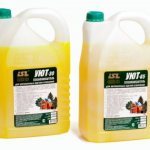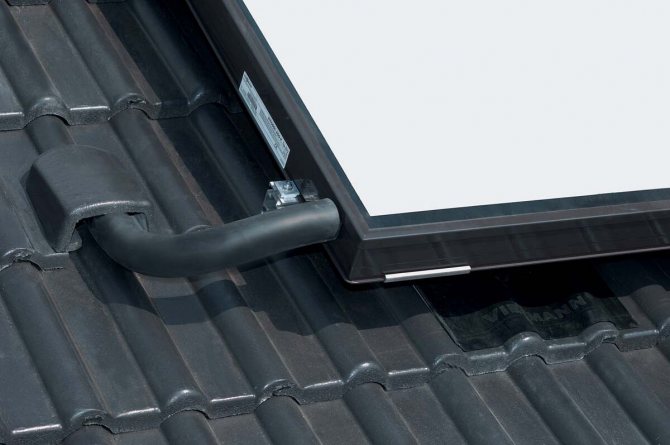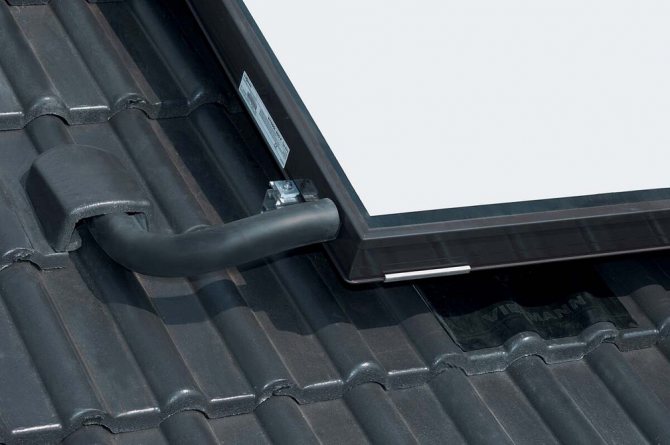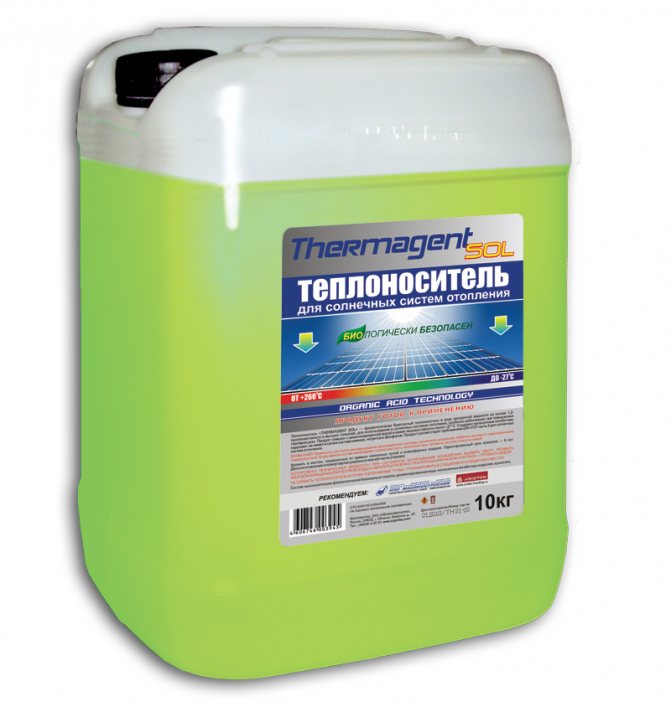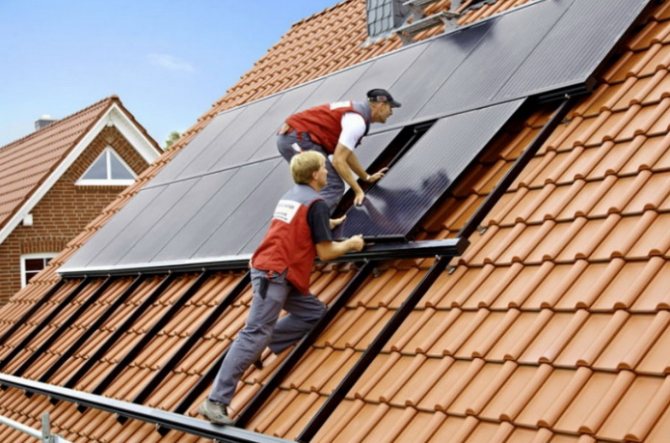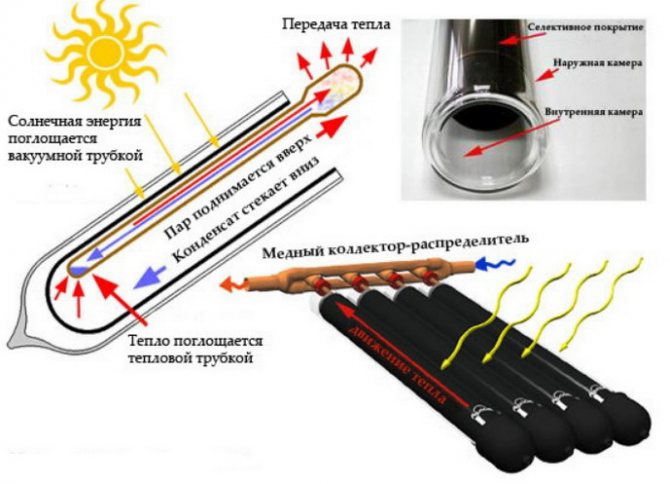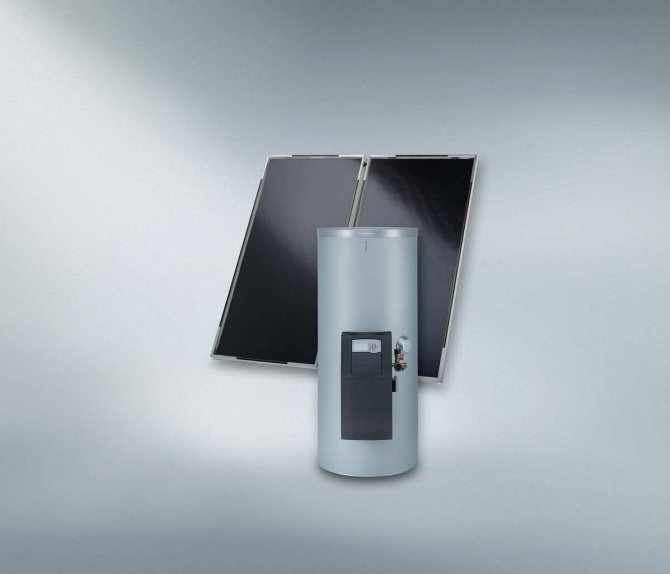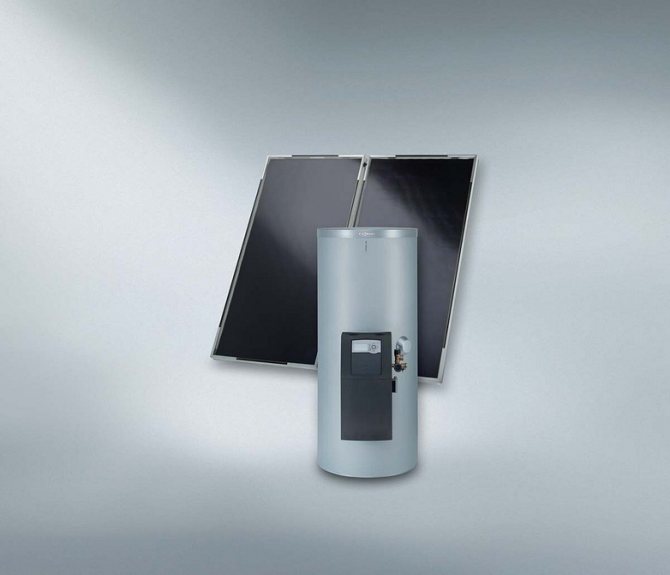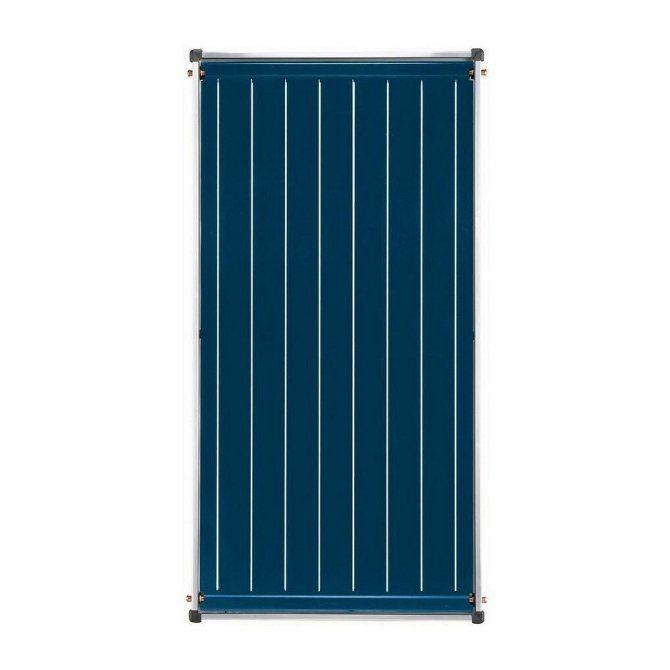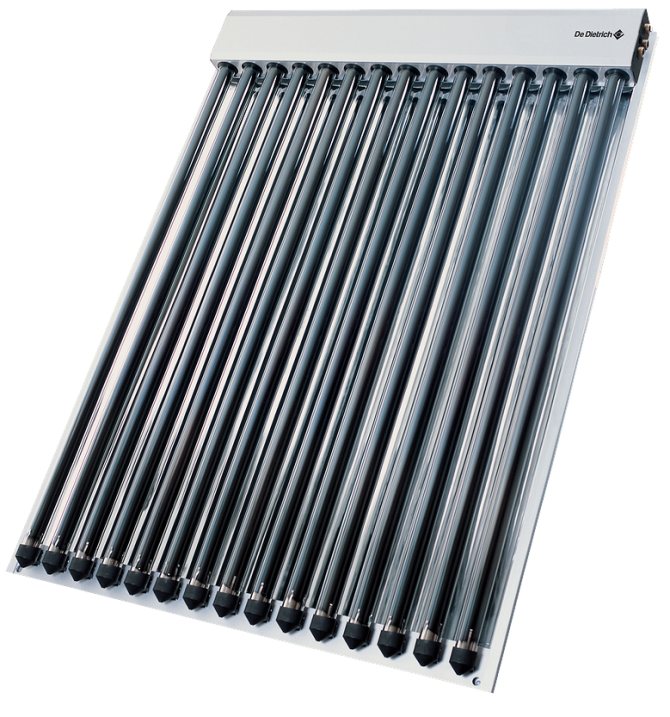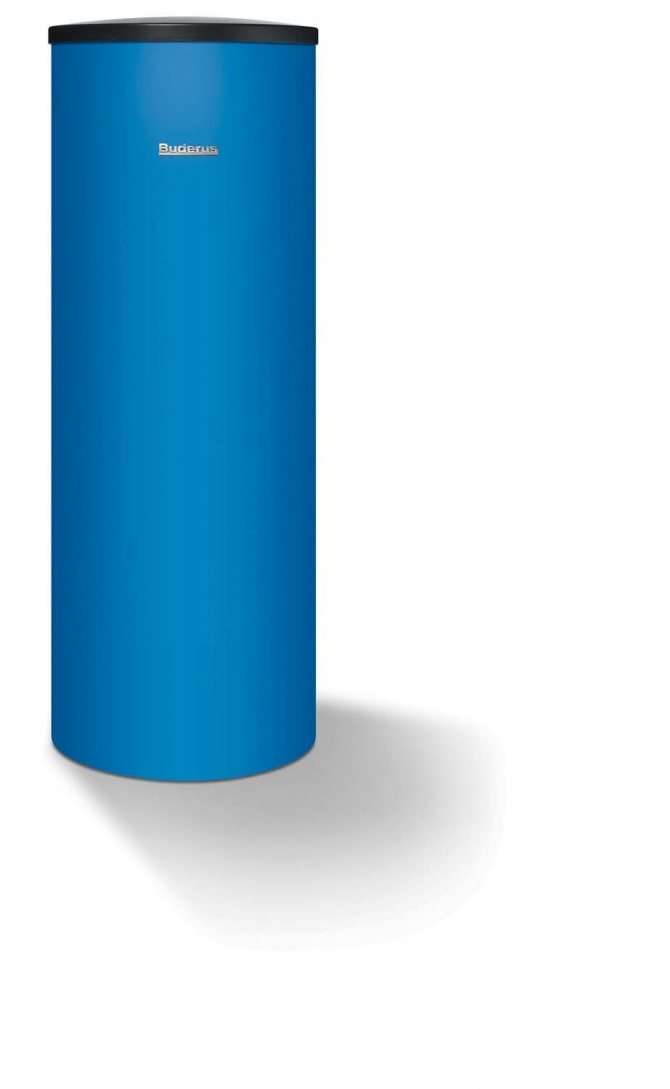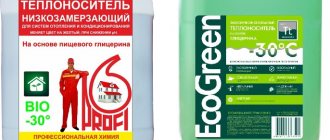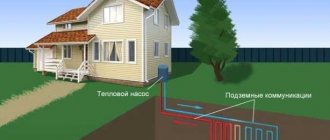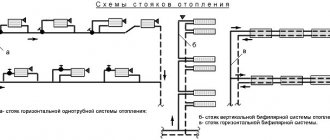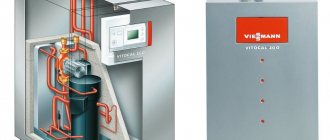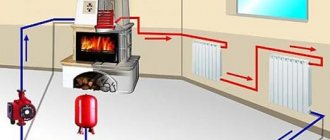Solar system
Heating a private house is a difficult and responsible issue, the solution of which requires costs and efforts. Tariffs and terms of supply of resources sometimes become excessively high and force to look for more rational and economical ways of heating without unnecessary costs. One of the options could be solar system based on completely free solar energy.
Every day, a huge amount of gigawatts falls on the earth's surface, which are scattered in the atmosphere and absorbed by the earth's crust. The amount of energy is great, but so far few opportunities have been invented to receive and store it. Solar systems for home heating are one of the ways to use solar energy for practical purposes.
What it is?
The solar system is complex of devices used to receive thermal energy from the Sun for home heating or other purposes. It is a heating source for the heating medium for the heating circuit of the house. Heating is done either directly or indirectly through a heat exchanger.
The solar system includes:
- Collector. A device that receives energy from the Sun and transfers it to the coolant in one way or another.
- Heating circuit of the house.
The main element of the system is the collector. It is a source of heating of the coolant. The rest is a conventional radiator heating system, or (better) underfloor heating.
It should be borne in mind that solar water heating systems, the price of which can be quite high, not always able to provide adequate and sufficient heating... It depends on the climatic and weather conditions in the region, the location of the house and other factors. Some experts believe that this type of heating can only be used as an additional option.
Views
There are different manifold designs that can demonstrate their effectiveness and capabilities:
- Open. Represent flat oblong black containers filled with water... It is heated by the sun's heat and can keep the water temperature in outdoor pools, outdoor showers, and more. The efficiency of such devices is extremely low, so they can only be used in the summer.
- Tubular. The main element of these systems are glass coaxial tubes, between the outer and inner parts of which a vacuum is created... A transparent protective layer with extremely low thermal conductivity is formed, which allows water (or antifreeze) to receive solar energy, practically without consuming it on the environment. The cost of such collectors is high, maintainability is extremely low and problematic.
- Flat. Represent flat boxes with transparent lid... The bottom is covered with a layer that actively accepts energy. KE pipes are soldered to it, along which water moves. Receiving heat, it is sent to the heating system. Sometimes air is pumped out from under the cover, increasing the efficiency of energy intake and reducing losses. There are also designs where the tubes are located between two receiving layers in which grooves are created for them. This allows for improved heat transfer.
There are also more modern types of collectors, in which the principle of a heat pump is used - there is a volatile liquid in a sealed container. When heated by the sun's heat, it evaporates. This vapor rises into the condensation chamber and settles on the walls, while releasing a lot of thermal energy.A water jacket is created on the other side of the walls, which receives this heat and is sent to the heating system.
Operating principle
The principle of operation of any collector is heating water or other coolant under the influence of sunlight... A classic example is the heating of objects on a windowsill, illuminated by the rays of the Sun, even if there is frost outside the window. In a similar way, energy is transferred in the collectors.
To obtain the maximum effect, it is necessary to provide optimal conditions, insulate all supply pipelines and a storage tank.
However, it should be borne in mind that any solar system for home heating, the price of which may turn out to be excessively high, has limited capabilities. It will be irrational to use it in regions with frosty winters, since the maximum difference between the temperatures outside and inside the collector should not exceed 20 °. This is only possible in relatively warm regions, where there is no severe cold weather and enough sunny days.
Number of contours
Solar power plants can be single and double-circuit. Single-circuit systems perform a single function - they heat the coolant for the heating line. Double-circuit systems not only heat the coolant, but also prepare hot water for domestic needs.
Single-circuit solar system design for heating a private house, it consists of a collector that heats water, which is supplied to a storage tank, from which it enters the heating circuit. Having passed a full circle, the water cools down and again finds itself in the collector, where it heats up again, and so on in a circle.
Dual-circuit systems are more complex... The coolant that heats up in the collector is directed to a coil installed inside the storage tank and gives off thermal energy, after which it enters the collector again. Heated water from the tank is supplied to the points of analysis (bathtubs, sinks and other plumbing fixtures), and is also directed to the heating circuit. Cooling down in it, it again enters the tank, where it is heated from the coil. Usually, antifreeze circulates inside the collector line, since the fluids do not mix, i.e. water heating occurs in an indirect way.
Types of coolant circulation
The coolant can move through the system in two ways:
Natural circulation. The principle of lifting heated liquids upwards is used. To ensure stable movement, the collector must be located below the storage tank, and the heating circuit must be located so that warm water rises up and enters the heating system, and the cooled return flow returns to the collector for heating
Forced circulation. In this case, a circulation pump is used to move the coolant. This option is preferable, since various external factors affecting the circulation regime disappear, the speed and direction of the flow become stable, maintained in a given mode. The disadvantage of this method is the need to purchase and maintain a pump that needs to be connected to an electric current network. The positive side is the ability to mount the system and arrange all the elements not according to the circulation conditions, but because it is more convenient and more rational in this room
In addition, there are options for the circulation of the coolant with entry into the heating circuitwhen it is connected directly to the manifold, and in its own closed loop. In this case, the transfer of heat energy is carried out indirectly through a coil installed in the storage tank.
Installation and orientation
The collector is installed in an open area, all day lit by the sun's rays. The best option is roof of the house, but any structure, tree or eminence located nearby can become an obstacle to the rays, so you need to immediately control the density of illumination.
Also the solar system for heating water must be installed so that the rays fall on its surface perpendicularly... To do this, it is necessary to mark the position of the Sun in the middle of daylight hours and install the panels perpendicular to the rays so that the light falls on them vertically. In this respect tubular structures are more efficient, since they do not have a plane as such, and the surface of the tube equally well receives the flow from either side.
Payback period
Solar systems for heating, the price of which depends on the size of the house and the external conditions in the region, can pay off in a fairly short time, or not pay off at all. It is extremely difficult to calculate in advance from what time it will start making a profit, since there are too many subtle effects and influencing factors. Weather or climatic conditions, the level of technical performance of the system elements, the type of heating circuits and much more are involved.
A solar water heating plant is a kind of investment projectwith a delayed payback period. It is believed that the average lifespan of the equipment is 30 years. All this time, the complex will provide a certain amount of thermal energy, for which nothing needs to be paid.
Investments in the creation of the system are only initial, then occasionally only current repair work will be needed, which does not require serious costs. At the end of their service life, all units and elements of the solar system can be used for other purposes or sold as secondary raw materials. therefore the economic effect of the work will be obtained in any case, although it is not the main goal of the whole plan.
Advantages and disadvantages
The advantages of using solar plants include:
- the opportunity to use the inexhaustible and completely free solar energy;
- independence from tariffs of resource organizations and suppliers;
- the ability to adjust and resize the system at will;
- long service life with minimal repair costs.
The disadvantages of solar systems are:
- the system works only during the daytime, consuming the accumulated heat at night;
- dependence on weather and climatic conditions;
- low efficiency and overall efficiency of solar plants;
- the ability to create a system is not available for all homeowners;
- in regions with frosty winters, the systems cannot work.
When choosing a heating system, it is necessary to know and take into account the advantages and disadvantages of this technique.
How solar panels work
In essence, these batteries are photogenerators of electrical energy. According to the laws of physics, sunlight generates a constant electric current by acting on semiconductor elements. A certain voltage arises in the battery circuits, which is applied directly to the objects themselves. A special battery stores energy, which is then used in cloudy weather.
Diagram of a water heating solar system.
It is more expedient to install the batteries on the southern side of the roof of the house, the roof angle should be at least 30⁰С. In doing so, it is recommended to take into account additional obstacles, for example, nearby buildings or trees, which may interfere with the operation of the entire system in the future. In the installed equipment, the flux of sunlight should be based on the calculation of 1000 kW / h per 1 m² per year. The received solar energy in this case will be equal to the use of 100 liters of gas. Some powerful batteries with an area of about 4 m², used to heat a private house, can provide an average family of three with hot water. They are capable of generating energy up to about 2000 kWh per year.
The solar panels include:
- a transparent, glass or plastic top panel, inside which water or air circulates;
- a blackened metal surface that absorbs the thermal energy of the sun;
- a water tank or storage tank, where the heated liquid or gas enters, then they move directly to the batteries.
The solar heating installation includes:
- ordinary converter;
- DC-to-AC converter;
- a sensor that regulates the charging and discharging of the battery;
- battery;
- power take-off mechanism.
Application
Diagram of the principle of operation and the device of the solar battery.
The solar heating system is mainly used to generate electricity. Accordingly, it is more practical to install such batteries in a house with electric heating, electric heaters and underfloor heating systems. Having equipped the heating of a private house with powerful solar panels, you can use hot water in the future. In this case, it is necessary to take into account the number of people living, the area of the heated housing and the consumption of energy consumed.
For example, in a family of three, on average, up to 500 kW per month are spent only on household appliances. This does not take into account the amount of energy for heating the water. It is best to calculate the area of the solar heating system by taking into account 1 m² of the area of the battery per person. To install a floor heating system, 1 m² of solar panel is required for every 10 m.
Efficiency
The efficiency of solar panels depends on many factors, and the main thing here is the incoming energy from the sun. In the case of heating a house located in northern latitudes, it is recommended to use combined types of heating, where heating by solar panels will be used as an additional option to gas or solid fuel heating.
The combined method of heating a private house can also be used in warmer latitudes, because the power of solar panels in insufficient natural light and in cloudy weather is extremely low. Therefore, heating in this way is more a means of saving than the main source of heat in the house. As a result, it is not recommended to completely abandon other methods of heating the house. The most efficient heating today is a combined heating method for housing.
How to choose a solar plant for heating and hot water supply of a residential building?
The choice of a solar system is an important step in determining the efficiency of its operation and investment of money. It is necessary to determine what kind of solar system is needed, the price and size, the type of solar collectors and other parameters of the complex.
It is necessary to select the design and configuration of the system, guided by the following criteria:
- the level of solar activity in the region;
- the amount of thermal energy required to heat the house;
- prioritize solar energy in heating the house - either the solar plant serves as the main system, or as a supplement.
Having decided on the main factors, you can proceed to selection of the optimal design and volume of the system.
Up to 100 m2
Solar system for heating a house of 100 sq. m. can serve as the main source of thermal energy... The main task will be the correct choice of the design of solar collectors so that it is possible to receive the maximum amount of heat.
It is necessary to produce calculation taking into account the number of storeys and configuration of the house, the number of sunny days per year, the parameters of the coolant in the system... Solar system for heating a house of 100 sq. m., the price of which can be from 18 thousand rubles. up to 180 thousand rubles. and above, it is quite capable of providing heating at home, if all the necessary conditions are met.
Up to 200 m2
For a house with an area of 200 m 2, the solar system can only become an additional source of heating. Typically, the peak of the use of such installations occurs in the autumn and spring, when there is enough solar heat, but there is a need for heating the house.
There are practically no design differences for such systems, only the storage tank is shared with the main heating line of the house. Experts say that the use of solar installations in the spring and autumn periods can reduce the load on heating systems by about 30-40%.
Excellent thermal physics of water. Heating media for the heating system
As mentioned, in most heating systems, water acts as a heat carrier. It is understandable, because it perfectly conducts heat, is non-toxic and environmentally friendly - and this is very important in terms of the safe functioning of heating systems.
At the same time, water has several significant disadvantages:
- its prolonged exposure can lead to the formation of salt build-up on heating devices;
- also water, being an inorganic substance, is highly corrosive to many metals.
Everyone knows about these problems and has always known, but few have tried to combat the destructive effect of water, which is surprising, because today many different products and devices are sold that can reduce its aggressiveness. This, in turn, will extend the service life of the metal parts of the system, the replacement or even repair of which is not a cheap pleasure.
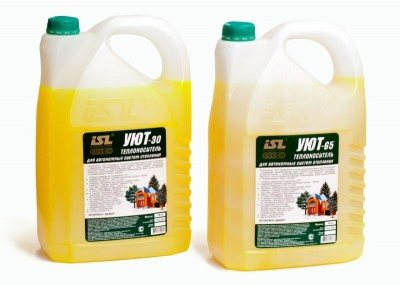
Heating medium for the Dixis heating system
Important! Quite good results are demonstrated by the aforementioned inhibitor additives.
Freezing can be considered the third important water shortage (this is especially true for the northern regions of the country). After freezing, the water turns into ice and expands, as a result of which the devices are damaged and the pipeline burst. Therefore, if you do not plan to constantly operate the heating system in winter, then it is better to fill in antifreeze instead of water.
Heat carrier (non-freezing liquid antifreeze) "Emelya"
How to calculate water temperature
When calculating, the following points must be taken into account:
- the average temperature of the last three days before the start of the heating season (8ᵒC must be added to this figure);
- the average temperature in the room (for residential it is 20ᵒС, for non-residential ones - 16ᵒС).
Educational and medical institutions have their own norms - they are indicated in SNiP.
DIY design
The design of solar installations is not so complex that people with some training would not be able to make and run them on their own in their homes. Solar system for home heating 100 sq m with your own hands - this is a completely realizable idea, which will help to significantly save on purchase and repair work... Let's consider the possible options.
Thermosiphon solar system
Thermosiphon solar systems are tubular collectorswhich were discussed above. There are free-flow and pressure-free structures that differ in the way the coolant circulates. Non-pressure ones work on the natural movement of liquid and do not need electricity, the structure of the complex is much simpler and cheaper. Pressure head are capable of providing a predetermined circulation mode and allow you to get maximum efficiency. The most active work of such systems is the period from April to October, the farther north the region, the shorter the period of the greatest activity of installations.
Air solar system
Air collectors are installations that using air as a heat carrier... They heat the house with a ventilation method, which allows you to seriously save on creating heating circuits and use the system all year round.
The collector is a hollow black box in which the air is heated by solar heat... Warm air is directed into the room, and cooled air is directed to the collector for heating. To reduce heat loss, the box is installed in a transparent sealed container that protects against external influences - wind, low temperature, etc. The inlet and outlet are placed in different rooms to increase the pressure difference and organize their own circulation of flows.
Output
We examined what a solar heating system is, figured out what they are, and also briefly touched on those important points that need to be taken into account during installation.
We hope you find the information useful in your business so that you can acquire a truly suitable system and ensure that it is installed correctly. If the information seemed not enough, then pay your attention to the additional video at the end of this article.
Did you like the article? Subscribe to our channel Yandex.Zen
Operating tips
The operation of solar plants is carried out in accordance with the design features. The main task of the owner is to maintain cleanliness, remove dust or snow. In some cases it is required to periodically change the position of the panels in accordance with the seasonal changes in the location of the Sun... Repair or replacement of individual elements is carried out as the need arises, all work can be performed both independently and with the help of involved specialists.
Application of solar collectors
A device that converts energy from sunlight into thermal energy is called solar collectors. The solar collector can be used both in the heating system of the building and in the hot water supply system. According to the calculated data, the use of these devices in heating systems of buildings and structures gives on average from 30% to 60% of energy savings (gas, electricity) annually, which means that it makes the operation of the building cheaper. The estimated self-sufficiency of solar energy systems is on average two to five years, depending on energy prices.
A solar collector for heating a house is included in the heat supply system, being, in fact, an element heating the heat carrier, while the main heat supply sources (gas or electric boilers) maintain the temperature of the heat carrier heated by the solar collector around the clock at a level required by technological or sanitary conditions. The efficiency of alternative heating systems is higher in regions with high solar activity and during daylight hours. A map of the total annual solar radiation is shown in the figure below.
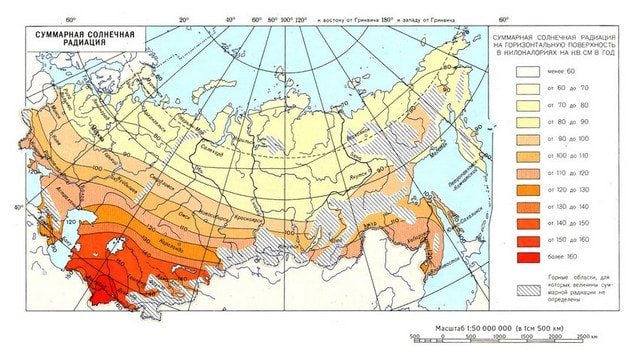

Types and differences of solar collectors
To date, two types of systems have become widespread among industrially manufactured solar collectors:
- flat solar panels;
- vacuum (evacuated) tubular collectors.
Flat solar panel


It is a common type of solar collector used in modern solar energy systems. This type has become widespread due to the relative cheapness and simplicity of both the device and operation. The disadvantage of flat solar collectors is a significant (up to two times) decrease in efficiency in conditions of negative outside temperatures.
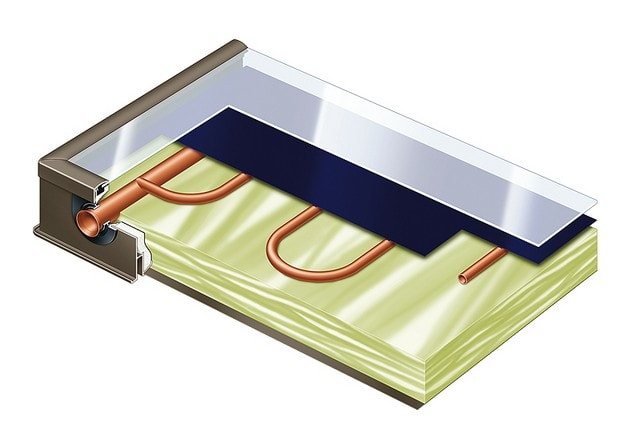

Flat solar collector design.
Structurally, it is a panel with an absorbing surface area of 2-2.5 m2, made of aluminum or steel alloys. The front part is made in the form of a sheet of special helioglass, which ensures maximum absorption of sunlight energy and minimum energy losses with reflected and scattered rays.Directly under the solar glass is an absorber made in the form of a flat tube made of copper or aluminum alloys with a high heat transfer coefficient.
The tube, as a rule, has radial ribbing, which significantly increases the heat transfer coefficient of the absorber. The absorber is coated with a high absorption coefficient in the thermal radiation spectra, which increases the overall efficiency of the collector. A layer of thermal insulation is located under the absorber, which reduces heat losses of the system to the environment. The required thermal capacity of the solar collector is achieved by connecting several panels to a single solar battery or collector.
Vacuum (evacuated) tube collector
An expensive type of solar collector due to its complex manufacturing and a number of advantages over flat solar panels. Structurally, it is a series of paired glass pipes, welded together, from the space between which air is pumped out. The vacuum in the space between the tubes is an excellent thermal insulator and prevents heat loss to the environment from the coolant. A copper, aluminum or glass absorber tube is inserted into the smaller tube. The pipes are introduced with the upper part into the distributor, in which the heat carrier circulates. Vacuum (evacuated) tubular collectors by the type of distributor are divided into two types: with a flat heat pipe and direct flow.
Flat tube manifolds
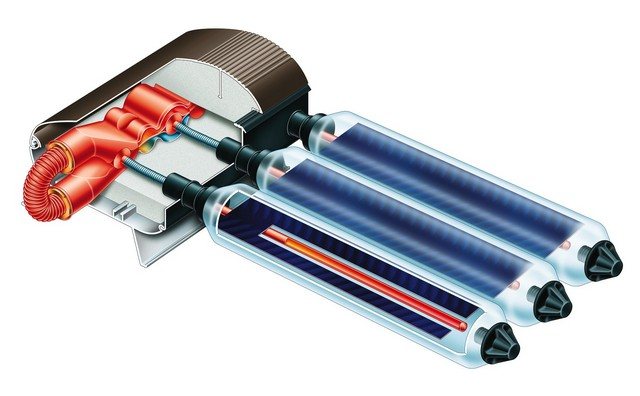

Flat Heat Pipe Vacuum Tube Solar Collector - Construction.
They are a recuperative heat exchanger located in the distributor. In this case, heat transfer from the heated coolant of the vacuum tube to the coolant of the heating circulation circuit of the building's heat supply occurs through the wall and the coolants of these circuits do not mix. Advantages over direct-flow collectors consist in maintaining high performance at ambient temperatures up to -45 ° C, the possibility of replacing a separate failed vacuum tube without disassembling the collector and stopping its operation, as well as the ability to adjust the angle of installation of each vacuum tube within one collector ...
Direct-flow manifolds


Direct-flow vacuum tubular solar collector - construction.
Combine the circulation and heating circuit. In the distributor, there are supply and circulation pipelines, to which the vacuum pipes are directly connected. The coolant is fed into the distributor through the supply pipeline, from which it enters the vacuum tube, where it is heated. The heated coolant returns to the return pipeline and goes directly to the needs of heat supply. The advantages of direct-flow collectors over vacuum ones are in the absence of an intermediate wall between the heat carriers, which reduces heat losses and the ability to install the collector on any surfaces at any angles, since the heat carrier will circulate within the entire collector by a pump.
